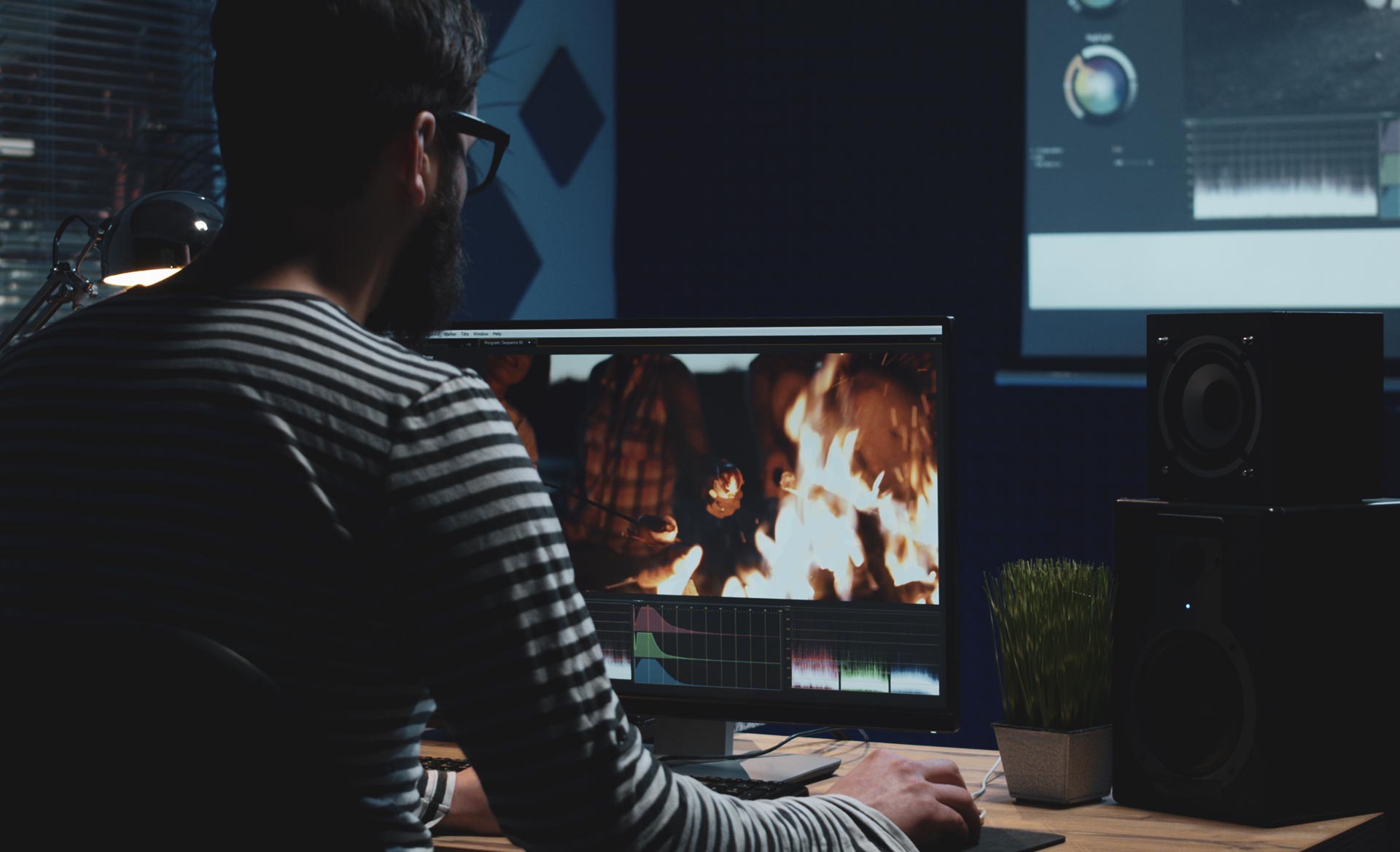An engaging story told short and sweet – that’s a solid basis for great videos. The secret sauce, which makes them really amazing: it’s b-roll. What it is, how you get extra shots and how you can use it to fix or cover up filming mistakes? Read on!

B Roll, Broll, b-roll footage, extra coverage – b-roll is supplementary or alternative video footage, that adds context to a video, following the motto “Show, don’t tell”. Imagine an interview with a beekeeper talking about the difference between bees and wasps. That’s a perfect time for some b-roll: While the wasp usually has conspicuous black-yellow stripes, the abdomen of the bee is rather brownish. The bee body is rather roundish and heavily hairy. In contrast, the wasp has only a few hairs. The term wasp waist is no coincidence: The body center of the wasp is clearly narrower than that of the bee.
By showing pictures or videos of these differences over the beekeeper’s talking, the differences are easier to understand. The b-roll creates a much more engaging interview than just showing the beekeeper all the time.
If she’s talking about honey: show an amazing image of honey. If in your video someone is talking about a barbecue, consider showing some stock footage of a garden party with people barbecuing. Show, don’t tell.
How you use b-roll for covering up mistakes
B-roll is a perfect cutting technique for eliminating unwanted scenes. For example: Your interview with the beekeeper went a little too long. Sometimes she gets off-topic, explains things too detailed, she “ehms”, or she thinks about what to answer for too long. All of those scenes you can edit out and insert some footage on top of the edits – of course not in the same length. The result: a condensed and easy to understand interview, which is more engaging than before. The best: Viewers are so used to seeing b-roll during interviews, they will not notice how much you trimmed or edited the video.
How to get great b-roll
Before you start filming, plan everything: What equipment do you need? What about lighting at your location? What is the schedule of the event, you are filming or what are the questions you want to ask your interviewee? That’s also the perfect time to start thinking about capturing b-roll. If you’re filming at an event: Come early. The test shoots are perfect footage for b-roll. Catch the decoration. Capture the environment. Take a close-up of the band’s guitarist’s hand playing guitar at the soundcheck. Ask the interviewee in advance whether she has some time for capturing b-roll after the interview and whether she has an idea about what to shoot for some extra material.
Sticking with the example of an interview with a beekeeper some b-roll footage could be bee boxes, a flying swarm of bees, the beekeeper wearing her protective clothing, or the beekeeper using a honey extractor, etc.
In short: Finding something relevant to the topic of your video is key, even if it appears to be a no-brainer like street signs, travel shots, decoration, screenshots, product shots, etc.
Don’t get caught without b-roll
Once you got used to shooting b-roll and editing it into your videos, you will start searching for some extra shots all the time. It will become part of your bloodstream. At first it will be hard to remember, but it will be worth it. It’s the best way to prevent unnecessary challenges during postproduction. You won’t say “I should have taken a picture of that building”, “I wish I had a shot of the bookshelf”, “I wish I could show the environment”. The extra shots may take time, but when you edit the video you will be grateful for having invested it. Plus: Archive B-Roll recordings – they can also be helpful for other videos, provided of course it’s not about a specific person or place…

B-rolls are great. I always do more than what I need. It’s awesome to have especially if you do 2min of 5min interviews. You can basically just have the interviewee on screen in the beginning, somewhere in the middle and at the end because you have so many cut-ways. Great stuff.